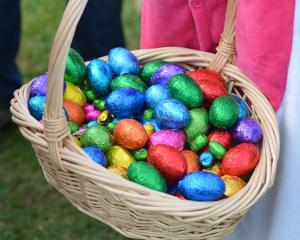Another of Dunedin's controversial multimillion-dollar projects is about to get its day in the sun, with the public opening of the rebranded and redeveloped Toitu Otago Settlers Museum today.
The $37.5 million redevelopment is predominantly ratepayer-funded, with financial contributions from the Government and community trusts. Fundraising is ongoing and commercial sponsorship is also being sought.
The social history museum tells the story of the people who shaped Dunedin and Otago and has been more than four years in the planning and redeveloping. Museum director Linda Wigley says the result is a ''modern, creative and, in parts, quirky museum experience'', provides the opportunity to ''see Dunedin in a new light'', and compares impressively ''internationally as well as nationally''. The museum blends and contrasts the historic and the modern - both in its buildings and its collections - with redevelopment of the historic 1800s Burnside building and 1930s Art Deco NZR building and a new modern arrowhead-shaped entrance foyer acting as a ''prow'' to draw visitors.
The museum now houses a state-of-the-art storage facility, research centre, touring exhibition gallery, extended exhibition space, new learning and rest zones and function spaces.
There are 14 themed galleries, housing the museum's collections - from costumes and textiles, to military, transport and computer collections - which feature digital and interactive displays. There is also a cafe and a gift shop.
Like several of the city's ratepayer-funded big-ticket items in recent years, the path to progress has not been a smooth one, with controversies over the necessity of the redevelopment, its initial and ongoing operating costs, design elements, and even its new name and branding.
The name Toitu was ''gifted'' by Te Pae o Mahutonga, the museum's Ngai Tahu advisory group and translates as ''inviolate/to be preserved forever'', ''untouched'', ''kept pure'', ''artistic pursuit'' (toi) and ''held on to forever'' (tu).
It is also the name of a small stream feeding into the Otago Harbour at the original landing place of Dunedin at the top of Water St, which had cultural significance as a pure water source. There were public objections to the Maori name, which in turn sparked claims of racism, and there were calls for recognition for other races to be recognised.
Other comments about the new name included the $4070 cost of the new logo, those concerned about the lack of an apostrophe in ''Settlers'', the placement and weighting of the Maori and English words, and those who believed public opinion had been ignored in the museum's competition and consultation process for the name, which was finally decided when Dunedin Mayor Dave Cull used his casting vote to break a councillor deadlock on the issue.
There is no doubt the cost of the redevelopment is a significant issue, particularly in addition to the city's other controversial multimillion-dollar ratepayer-funded projects - including the Forsyth Barr Stadium and town hall complex redevelopment - and the current economic climate.
While some aspects of the original plans were axed, such as a viewing tower which would have cost several million dollars more, the spotlight will remain now on the ongoing cost to ratepayers, particularly in the light of the financial challenges facing the stadium and the Chinese Garden - both of which have attracted fewer events and visitors than hoped and budgeted for, putting extra pressure on ratepayers.
The museum faces challenges as there is no general admission fee, but will seek to boost its coffers through tours, programmes, retail sales and function hire.
But culture and heritage are important aspects to any city, and museums and galleries are considered by many to be important infrastructure - and one that should be borne by ratepayers. Although opinion is likely to remain divided, there is no denying the city now has a revamped cultural asset of which we and future generations can hopefully be proud.
It is certainly hoped residents and visitors alike will make as much use of it as possible. The museum's civic opening was celebrated yesterday.
Today, ratepayers will be able to judge for themselves whether the redevelopment, with its blend of the historic and the modern, has been worth all the time, energy, debate - and money.












